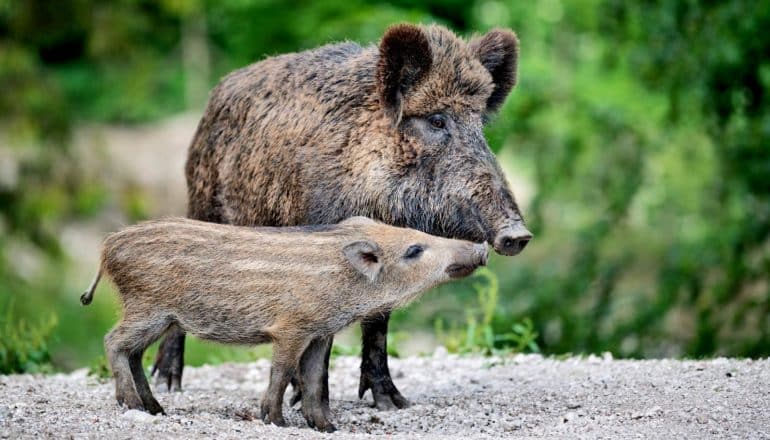
Pigs have the genetic makeup of European wild boars, and have mostly lost the original identity they had roughly 10,000 years ago, according to a new study.
When researchers sequenced DNA from hundreds of pigs collected from the Middle East and Europe, they found that the first pigs to arrive in Europe and live alongside farmers 8,000 to 10,000 years ago had a definite Middle Eastern genetic history.
But over the next 3,000 years or so, almost all the pigs mingled with European wild boars, so much so that they lost all the original identity.
The pigs became more genetically like the Europeans boars, but kept typical domesticated signals which showed in their coats and colors, ranging from black to brown and eventually spotted.
“Having access to ancient genomes over such a large space and time has allowed us to see the slow-motion replacement of the entire genome of domestic pigs,” the research team writes.
“This suggests that pig management in Europe over millennia was extensive, and that though swine herders maintained selection for some coat colors, domestic pigs interacted with wild boar frequently enough that they lost the ancestral signature of the wild boar from which they were derived.
“We are all taught that the big change was the initial process of domestication, but our data suggests that almost none of the human-selection over the first 2,500 years of pig domestication has been important in the development of modern European commercial pigs.”
Figuring out what really happened with pigs over the last 10,000 years took some detective work, says Anna Linderholm, director of the BiG (bioarchaeology and genomics) Laboratory and an archaeologist at Texas A&M University.
“We could not have seen this by looking at the modern DNA because the real truth of what happened in prehistory lies buried in the ancient DNA. This means that when we look at modern European pigs, they look like they were domesticated in Europe even though we now know that is not true.”
As a next step, the researchers will work to precisely identify the few genes that modern pigs have retained from their original Middle Eastern ancestry. That will allow them to determine whether the artificial selection applied by early farmers over 10,000 years ago left any further legacy in modern pigs beyond coat color.
The work appears in the Proceedings of the National Academy of Sciences.
Source: Texas A&M University
The post Wild boar genes recreated domestic pigs appeared first on Futurity.
from Futurity https://ift.tt/2OXCMNP
No comments:
Post a Comment